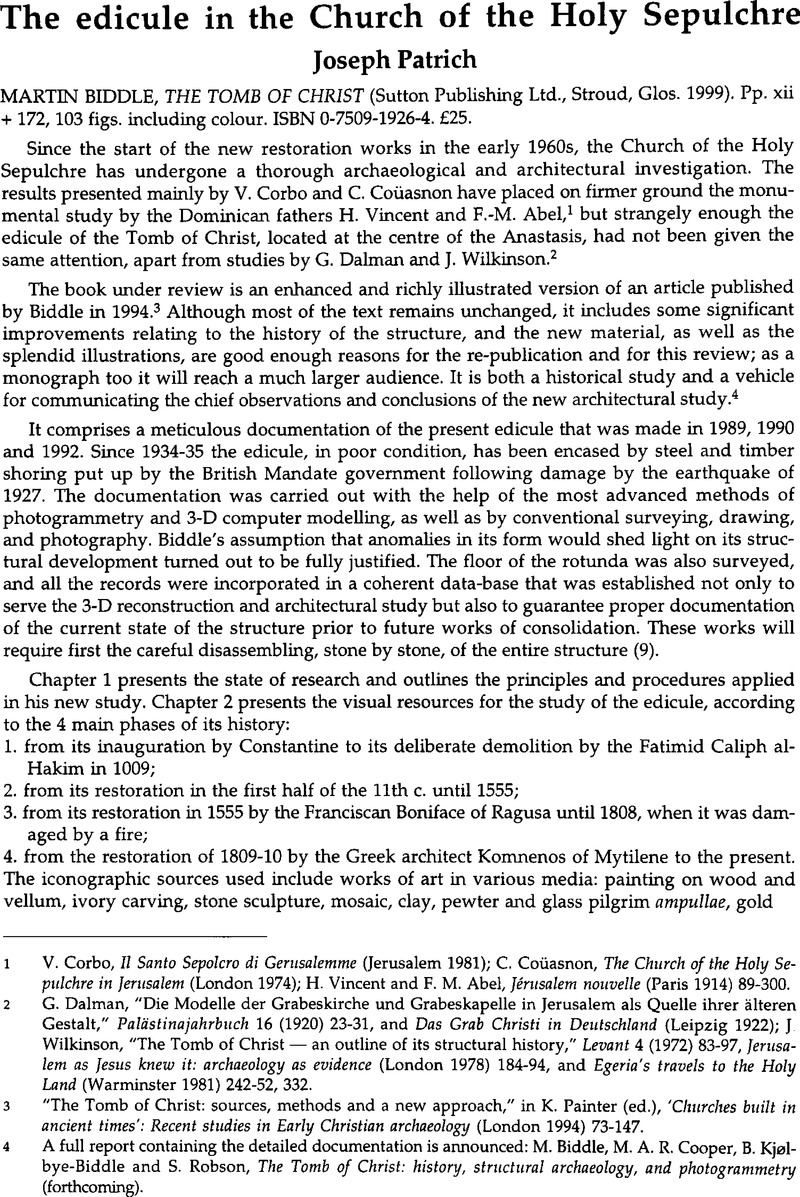Published online by Cambridge University Press: 16 February 2015

1 Corbo, V., Il Santo Sepolcro di Gerusalemme (Jerusalem 1981)Google Scholar; Coüasnon, C., The Church of the Holy Sepulchre in Jerusalem (London 1974)Google Scholar; Vincent, H. and Abel, F. M., Jérusalem nouvelle (Paris 1914) 89–300 Google Scholar.
2 Dalman, G., “Die Modelle der Grabeskirche und Grabeskapelle in Jerusalem als Quelle ihrer älteren Gestalt,” Palästinajahrbuch 16 (1920) 23–31 Google Scholar, and Das Grab Christi in Deutschland (Leipzig 1922)Google Scholar; Wilkinson, J., “The Tomb of Christ — an outline of its structural history,” Levant 4 (1972) 83–97 CrossRefGoogle Scholar, Jerusalem as Jesus knew it: archaeology as evidence (London 1978) 184–94Google Scholar, and Egeria's travels to the Holy Land (Warminster 1981) 242-52, 332 Google ScholarPubMed.
3 “The Tomb of Christ: sources, methods and a new approach,” in Painter, K. (ed.), ‘Churches built in ancient times’: Recent studies in Early Christian archaeology (London 1994) 73–147 Google Scholar.
4 A full report containing the detailed documentation is announced: M. Biddle, M. A. R. Cooper, B. Kjølbye-Biddle and S. Robson, The Tomb of Christ: history, structural archaeology, and photogrammetry (forthcoming).
5 These points were not spelled out as clearly in the 1994 article as they are in the book.
6 Ousterhout, R., “Rebuilding the Temple: Constantine Monomachus and the Holy Sepulcher,” JSAH 48 (1989) 66–78 Google Scholar.
7 John Skylitzes in Greek, Bar Hebraeus in Syriac, and Yahya ibn Sa'id of Antioch in Arabic.
8 As it was shown in the plan of Bernardino Amico (1591-96).
9 As favoured by Coüasnon and by Corbo.
10 Minor flaws noted include p. 129 where the narrow shelf of red stone above the tomb is attributed to the restoration of 1809-10, while in the caption to fig. 1 it is assumed that it was already set there in 1555; and note 5, mentioned on 135, is missing from the endnotes on p. 157.